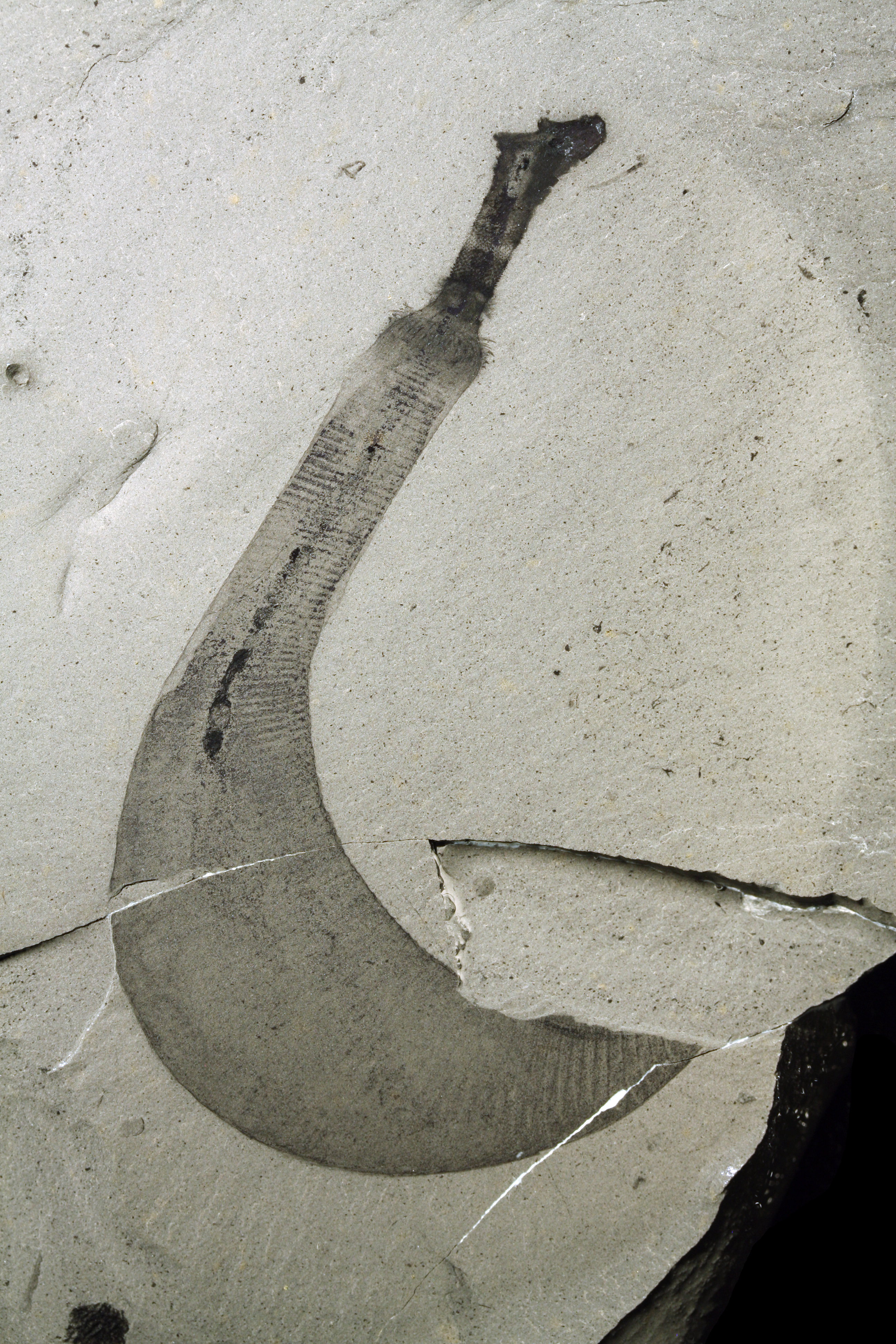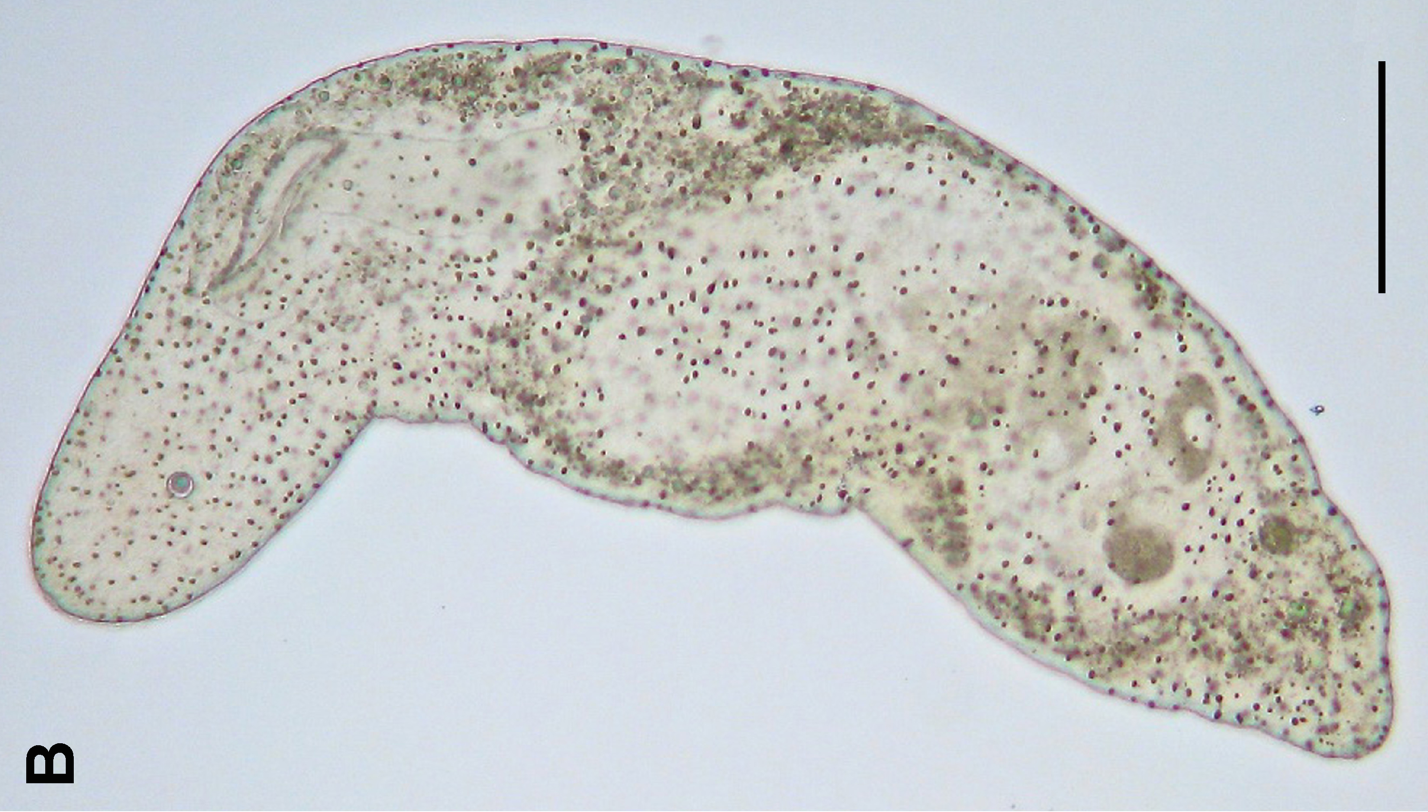|
Priapulida
Priapulida (priapulid worms, from Gr. πριάπος, ''priāpos'' ' Priapus' + Lat. ''-ul-'', diminutive), sometimes referred to as penis worms, is a phylum of unsegmented marine worms. The name of the phylum relates to the Greek god of fertility, because their general shape and their extensible spiny introvert (eversible) proboscis may resemble the shape of a human penis. They live in the mud, except for a few tropical meiobenthic species which live in medium- to coarse-grained sands, and are found in comparatively shallow waters to deep waters and no warmer than 12–13°C. Some species show a remarkable tolerance for hydrogen sulfide, anoxia and low salinity. ''Halicryptus spinulosus'' appears to prefer brackish shallow waters. They can be quite abundant in some areas. In an Alaskan bay as many as 85 adult individuals of '' Priapulus caudatus'' per square meter has been recorded, while the density of its larvae can be as high as 58,000 per square meter (5,390 per square foot). ... [...More Info...] [...Related Items...] OR: [Wikipedia] [Google] [Baidu] |
Halicryptomorpha
''Halicryptus'' is the sole genus of its class of priapulid worms, and has an important effect on the structure of soft-sediment communities. This genus contains the following species: * ''Halicryptus higginsi'' * ''Halicryptus spinulosus'' - type species ''Halicryptus spinulosus'' exhibits a wide distribution around the Arctic Ocean and can reach lengths of 4 cm as adults, while the distribution of ''Halicryptus higginsi'' appears to be restricted to the Beaufort Sea near Point Barrow, and can grow to about 40 cm, the largest known priapulids, even if 20 cm long adults are more common. Halicryptus spinulosus Halicryptus spinulosus is a species of priapulid worm found in marine environments. It is a macrobenthic priapulid living in disjunct subarctic brackish seas, including the White Sea, waters off Iceland, northern Siberia and Alaska, and in an outlying range in the Baltic Sea. Known for its distinctive spiny appearance, this worm plays a role in the benthic ecosystem, ... [...More Info...] [...Related Items...] OR: [Wikipedia] [Google] [Baidu] |
Ecdysozoa
Ecdysozoa () is a group of protostome animals, including Arthropoda (insects, chelicerates (including arachnids), crustaceans, and myriapods), Nematoda, and several smaller phylum (biology), phyla. The grouping of these animal phyla into a single clade was first proposed by Eernisse ''et al.'' (1992) based on a phylogenetic analysis of 141 morphological characters of ultrastructural and embryological phenotypes. This clade, that is, a group consisting of a common ancestor and all its descendants, was formally named by Aguinaldo ''et al.'' in 1997, based mainly on phylogenetic trees constructed using 18S ribosomal RNA genes. A large study in 2008 by Dunn ''et al.'' strongly supported the monophyly of Ecdysozoa. The group Ecdysozoa is supported by many Morphology (biology), morphological characters, including growth by ecdysis, with moulting of the cuticle – without mitosis in the epidermis – under control of the prohormone ecdysone, and internal fertilization. The group was i ... [...More Info...] [...Related Items...] OR: [Wikipedia] [Google] [Baidu] |
Scalidophora
Scalidophora is a group of marine pseudocoelomate ecdysozoans that was proposed on morphological grounds to unite three phyla: the Kinorhyncha, the Priapulida and the Loricifera. The three phyla have four characters in common — chitinous cuticle that is moulted, rings of scalids on the introvert, flosculi, and two rings of introvert retracts.Heiner, I., Kristensen, R.H. 2005. Two new species of the genus ''Pliciloricus'' (Loricifera, Pliciloricidae) from the Faroe Bank, North Atlantic. Zoologischer Anzeiger. 243: 121–138. The introvert and abdomen are separated by a distinct neck region in all groups, but in adult macroscopic priapulids it becomes rudimentary in ''Priapulus'' and is completely absent in ''Halicryptus''. However, the monophyly of the Scalidophora was not supported by two molecular studies, where the position of the Loricifera was uncertain or as sister to the Panarthropoda. Both studies supported a reduced Scalidophora comprising the Kinorhyncha and Priapulid ... [...More Info...] [...Related Items...] OR: [Wikipedia] [Google] [Baidu] |
Priapulus Caudatus
''Priapulus caudatus'' known as the cactus worm, is a marine invertebrate belonging to the phylum Priapulida. It is a cylindrical, unsegmented worm which burrows in soft sediment on the seabed. It has a circumpolar distribution. Taxonomy and evolution ''Priapulus caudatus'' is one of only nineteen known species in the phylum Priapulida. French naturalist Jean-Baptiste Lamarck first described it in 1816. Phylogenetic studies have indicated that scalidophorans, to which priapulids belong, are a basal clade of ecdysozoans (animals that grow by shedding their exoskeleton), and thus a sister group to all other ecdysozoans, an assortment including nematodes and arthropods. Priapulids were abundant and widespread in the Early Cambrian period and their tunnelling activities in soft sediment created many trace fossils. ''P. caudatus'' is likely to be very similar to the animals existing at that time. Description A cylindrical unsegmented worm, ''P. caudatus'' grows to a length of . The ... [...More Info...] [...Related Items...] OR: [Wikipedia] [Google] [Baidu] |
Priapulimorpha
Priapulimorphida is the sole order within the Priapulimorpha, one of the three extant Priapulid Priapulida (priapulid worms, from Gr. πριάπος, ''priāpos'' 'Priapus' + Lat. ''-ul-'', diminutive), sometimes referred to as penis worms, is a phylum of unsegmented marine worms. The name of the phylum relates to the Greek god of fertility ... classes. References Priapulida Ecdysozoa orders Extant Pennsylvanian first appearances {{Protostome-stub ... [...More Info...] [...Related Items...] OR: [Wikipedia] [Google] [Baidu] |
Nematode
The nematodes ( or ; ; ), roundworms or eelworms constitute the phylum Nematoda. Species in the phylum inhabit a broad range of environments. Most species are free-living, feeding on microorganisms, but many are parasitic. Parasitic worms (helminths) are the cause of soil-transmitted helminthiases. They are classified along with arthropods, tardigrades and other moulting animals in the clade Ecdysozoa. Unlike the flatworms, nematodes have a tubular digestive system, with openings at both ends. Like tardigrades, they have a reduced number of Hox genes, but their sister phylum Nematomorpha has kept the ancestral protostome Hox genotype, which shows that the reduction has occurred within the nematode phylum. Nematode species can be difficult to distinguish from one another. Consequently, estimates of the number of nematode species are uncertain. A 2013 survey of animal biodiversity suggested there are over 25,000. Estimates of the total number of extant species are su ... [...More Info...] [...Related Items...] OR: [Wikipedia] [Google] [Baidu] |
Coelom
The coelom (or celom) is the main body cavity in many animals and is positioned inside the body to surround and contain the digestive tract and other organs. In some animals, it is lined with mesothelium. In other animals, such as molluscs, it remains undifferentiated. In the past, and for practical purposes, coelom characteristics have been used to classify bilaterian animal phyla into informal groups. Etymology The term ''coelom'' derives from the Ancient Greek word () 'cavity'. Structure Development The coelom is the mesodermally lined cavity between the gut and the outer body wall. During the development of the embryo, coelom formation begins in the gastrulation stage. The developing digestive tube of an embryo forms as a blind pouch called the archenteron. In protostomes, the coelom forms by a process known as schizocoely. The archenteron initially forms, and the mesoderm splits into two layers: the first attaches to the body wall or ectoderm, forming ... [...More Info...] [...Related Items...] OR: [Wikipedia] [Google] [Baidu] |
Gephyrea
Gephyrea is a now-dismantled class of marine worms, containing the three modern taxa Echiura, Sipuncula, and Priapulida. Also ''Sternaspis (annelid), Sternaspis'', the first described genus in the family Sternaspidae, was at some point assumed to be related to Echiura and therefore included in the Gephyrea. This class was not monophyletic. Priapulida are now considered a distinct phylum among Ecdysozoa, while the other two taxa are classified as Annelids. The word was created by Jean Louis Armand de Quatrefages de Bréau, Quatrefages from the Greek ''γέφυρα'' (''géphura'') 'bridge', because these animals seemed intermediate between Annelids and Holothurians. References Obsolete animal taxa Protostome classes {{protostome-stub ... [...More Info...] [...Related Items...] OR: [Wikipedia] [Google] [Baidu] |
Kinorhyncha
Kinorhyncha (, ' "snout") is a phylum of small marine invertebrates that are widespread in mud or sand at all depths as part of the meiobenthos. They are commonly called mud dragons. Modern species are or less, but Cambrian forms could reach . Anatomy Kinorhynchs are limbless animals, with a body consisting of a head, neck, and a trunk of eleven segments. They are the only members of Ecdysozoa, except from the panarthropoda, with a segmented body. Juveniles have eight or nine segments, depending on genus, with the last two or three being added later during growth. A Cambrian species, Eokinorhynchus rarus, had about twice as many segments as present forms. Like other ecdysozoans they do not have external cilia, but instead have a number of spines along the body, plus up to seven circles of spines around the head. These spines are used for locomotion, withdrawing the head and pushing forward, then gripping the substrate with the spines while drawing up the body. The body ... [...More Info...] [...Related Items...] OR: [Wikipedia] [Google] [Baidu] |
Arthropod
Arthropods ( ) are invertebrates in the phylum Arthropoda. They possess an arthropod exoskeleton, exoskeleton with a cuticle made of chitin, often Mineralization (biology), mineralised with calcium carbonate, a body with differentiated (Metamerism (biology), metameric) Segmentation (biology), segments, and paired jointed appendages. In order to keep growing, they must go through stages of moulting, a process by which they shed their exoskeleton to reveal a new one. They form an extremely diverse group of up to ten million species. Haemolymph is the analogue of blood for most arthropods. An arthropod has an open circulatory system, with a body cavity called a haemocoel through which haemolymph circulates to the interior Organ (anatomy), organs. Like their exteriors, the internal organs of arthropods are generally built of repeated segments. They have ladder-like nervous systems, with paired Anatomical terms of location#Dorsal and ventral, ventral Ventral nerve cord, nerve cord ... [...More Info...] [...Related Items...] OR: [Wikipedia] [Google] [Baidu] |
Echiura
The Echiura, or spoon worms, are a small group of ocean, marine animals. Once treated as a separate phylum, they are now considered to belong to Annelida. Annelids typically have their bodies divided into Segmentation (biology), segments, but echiurans have secondarily lost their segmentation. The majority of echiurans live in burrows in soft sediment in shallow water, but some live in rock crevices or under boulders, and there are also deep sea forms. More than 230 species have been described. Spoon worms are cylindrical, soft-bodied animals usually possessing a non-retractable proboscis which can be rolled into a scoop-shape to feed. In some species the proboscis is ribbon-like, longer than the trunk and may have a forked tip. Spoon worms vary in size from less than a centimetre in length to more than a metre. Most are deposit feeders, collecting detritus from the sea floor. Fossils of these worms are seldom found and the earliest known fossil specimen is from the Darriwilian, ... [...More Info...] [...Related Items...] OR: [Wikipedia] [Google] [Baidu] |
Meiobenthos
Meiobenthos, also called meiofauna, are small benthic invertebrates that live in marine or freshwater environments, or both. The term ''meiofauna'' loosely defines a group of organisms by their sizelarger than microfauna but smaller than macrofaunarather than by their taxonomy. This fauna includes both animals that turn into macrofauna later in life, and those small enough to belong to the meiobenthos their entire life. In marine environments there can be thousands of individuals in 10 cubic centimeters of sediment, and counts animals like nematodes, copepods, rotifers, tardigrades and ostracods, but protists like ciliates and foraminifers within the size range of the meiobenthos are also often included. In practice, the term usually includes organisms that can pass through a 1 mm mesh but are retained by a 45 μm mesh, though exact dimensions may vary. Whether an organism will pass through a 1 mm mesh also depends upon whether it is alive or dead at the time o ... [...More Info...] [...Related Items...] OR: [Wikipedia] [Google] [Baidu] |






